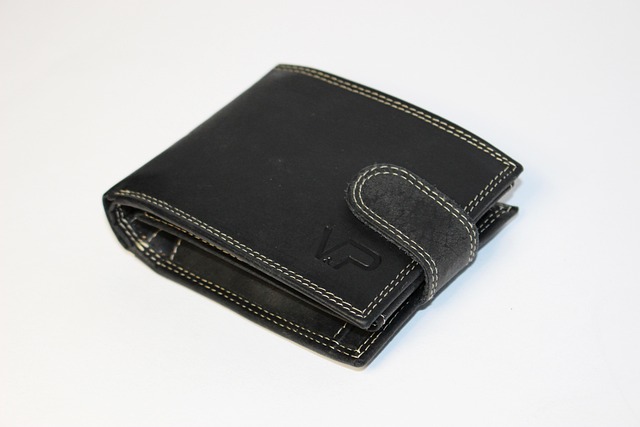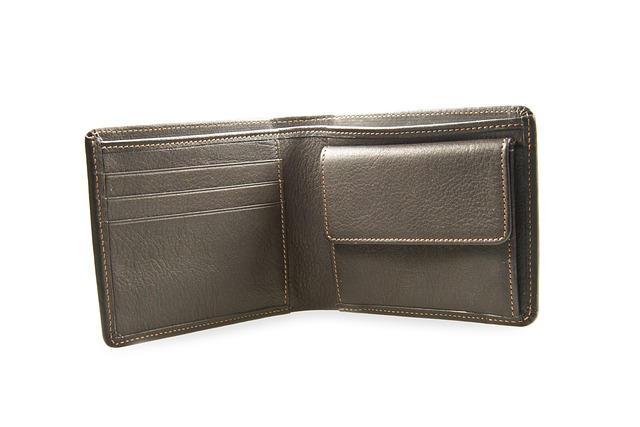Altcointrader Wallet Address Guide 2025: Setup, Security, and Transfers
Author: Jameson Richman Expert
Published On: 2025-11-06
Prepared by Jameson Richman and our team of experts with over a decade of experience in cryptocurrency and digital asset analysis. Learn more about us.
This comprehensive guide explains everything you need to know about the altcointrader wallet address — how to find it, how wallet addresses work, safe ways to deposit and withdraw, troubleshooting missing transactions, and best practices for security and compliance in 2025. Whether you’re new to using exchange wallets or an experienced trader moving altcoins between platforms, this article provides step-by-step instructions, real-world tips, and links to authoritative resources and tools to help you manage addresses and transfers reliably.

What is an altcointrader wallet address?
An altcointrader wallet address is the unique public address provided by the AltcoinTrader exchange (or any cryptocurrency exchange) that allows you to receive a specific cryptocurrency into your exchange account. Wallet addresses are specific to each cryptocurrency and often to the network (for example, Ethereum ERC-20 vs. BSC BEP-20). When you want to deposit coins into AltcoinTrader, you copy the exchange’s deposit address and paste it into the sending wallet or exchange. Using the wrong network or token format is a leading cause of lost funds — so understanding address formats and confirming networks is critical.
How wallet addresses work (quick blockchain primer)
Wallet addresses are derived from public/private key pairs on blockchains. They function like bank account numbers for on-chain transfers. A transaction needs a valid recipient address and a valid signature from the sender’s private key. For a high-level technical overview, see the Wikipedia page on cryptocurrency.
How to find your altcointrader wallet address (step-by-step)
Below is a general workflow for locating the deposit address for a specific coin on AltcoinTrader or a similar exchange. Interfaces vary, but the core steps are nearly universal.
- Log into your AltcoinTrader account. Complete any required 2FA or identity verification before accessing deposit addresses.
- Navigate to “Wallets”, “Balances”, or “Deposit” page. This is usually under “Account” or “Funds”.
- Select the cryptocurrency you want to deposit. Example: ETH, USDT, BTC, etc. Use the search bar if many coins are listed.
- Choose the correct network. If multiple networks exist (e.g., ERC20 vs BSC vs TRC20), confirm which one you will send from. Sending ERC-20 tokens to a BSC address or vice versa can cause loss or require manual recovery.
- Copy the deposit address and optional memo/tag. Use the “copy” button rather than manually typing. If a coin requires a tag/memo (XRP, XLM, BNB, etc.), copy that as well — omitting a memo often results in delayed or lost funds.
- Paste address in the sending wallet and double-check it. Confirm the address visually (first/last characters) and via network dropdown on the sender. Send a small test transaction if the amount is significant.
Example tip: When moving ERC-20 tokens between wallets, confirm the address starts with “0x” (Ethereum). Bitcoin addresses often start with 1, 3, or bc1 depending on format.
Address formats and special fields
- Standard address — the main string you paste into the sender.
- Memo/Tag/Destination Tag — required for some chains (e.g., Ripple/XRP, Stellar/XLM, BNB chain centralized deposits). It routes the deposit to your specific account on the exchange.
- Network selection — choose the network that matches the sending wallet; fee and speed vary by network.
Deposits, Withdrawals, and Transfer Best Practices
Use these practical rules every time you move funds to or from an altcointrader wallet address to reduce risk and avoid support headaches.
- Always verify network compatibility — confirm ERC-20 vs BEP-20 vs TRC20, or native chain vs wrapped token.
- Use test transactions for large amounts — send a small value first (e.g., $10) and confirm arrival before sending the full amount.
- Never reuse memo/tag carelessly — ensure the tag corresponds to your account; some exchanges require unique tags per deposit.
- Keep a copy of TXID/transaction hash — if a deposit is delayed or missing, you’ll need the TXID to open a support ticket or prove transaction status on a block explorer.
- Monitor fees and speed — network congestion affects confirmation times and fees; choose the best balance between cost and speed for your needs.
- Whitelist withdrawal addresses — where available, whitelist addresses you regularly send funds to; it adds protection and reduces social engineering risk.

Security: Protecting your altcointrader wallet address and account
Exchanges store private keys; you interact with public deposit addresses. Security is about account access, confirming addresses, and protecting private keys in self-custody scenarios. Key security measures:
- Enable strong 2FA (Authenticator app) — avoid SMS 2FA where possible (SIM-swap risk).
- Use email and withdrawal whitelists — lock withdrawals so only whitelisted addresses are allowed.
- Keep passwords unique and use a password manager.
- Consider hardware wallets for long-term or large holdings — for self-custody, a hardware wallet (e.g., Ledger, Trezor) ensures private keys are offline.
- Beware of phishing — always verify the domain before logging in. Learn to spot fake sites and emails.
If you want best practices for long-term staking or moving assets off-exchange for greater security, read this guide on ETH staking rates and staking fundamentals: ETH staking rate today — where to find and understand.
Troubleshooting missing deposits and wrong-network transfers
When a deposit doesn't arrive, check these items in order:
- Confirm the transaction on a block explorer using the TXID. If it’s confirmed on-chain, the sender did their part.
- Verify the destination address and network used. If you sent to the wrong network, funds might still be recoverable but will require manual recovery by the exchange (possible fees and delays).
- Check whether a memo/tag was required and omitted; if so, contact support with the TXID and explanation.
- Open a support ticket and provide TXID, sending address, receiving address, coin, network, date/time, and screenshots if available.
Exchanges often have documented processes for recovering wrongly-sent assets; these usually involve KYC and recovery fees. For deeper guidance on margin, leverage, and risk (useful if you're moving collateral between platforms) see this Kraken margin trading guide: Can you trade with leverage on Kraken? An in-depth guide.
Using your altcointrader wallet address with trading strategies
Your deposit address is the first step in executing trading strategies like spot trading, copy trading, staking, or using signals. A few practical use-cases:
- Spot trading — deposit into your exchange wallet to buy and sell altcoins quickly.
- Margin and leverage — if you move funds to exchanges that offer margin, ensure you understand cross-exchange transfer times and liquidation risk (see margin guide above).
- Copy trading — investors can deposit to platforms that support copying strategies; learn about realistic expectations and tests here: Copy trading — does it work? Reddit real tests and practical advice.
- Staking and yield — deposit to staking-compatible wallets or stake via exchanges; read staking rate explanations here: where to find and understand ETH staking rates.
- Trading signals — if you use signals, route funds to your exchange wallets to act quickly. Learn about signal sources and cautionary notes here: Top trading signals Telegram free guide 2025.

Choosing exchanges and opening accounts (recommended platforms)
If you’re moving funds between exchanges or need advanced trading features, consider reputable exchanges. Below are popular platforms where you can register; use them to diversify liquidity and trading options, and always compare fees, supported coins, and security features.
- Binance — broad altcoin liquidity, multiple networks, and staking options. Open an account here: Register on Binance.
- MEXC — wide token listings and incentives for altcoin traders: Register on MEXC.
- Bitget — copy trading features and derivatives: Register on Bitget.
- Bybit — derivatives and spot markets, useful for cross-exchange strategies: Register on Bybit.
Opening accounts across different exchanges gives you more options when matching networks and reduces single-point-of-failure risks. Before transferring, verify deposit addresses and test small deposits.
Where to get reliable market information and signals
Use trusted news and research to guide trading decisions and understand network-level changes that can affect address formats and deposit routing. Recommended reading and resources:
- News aggregators and professional outlets — find recommended news sources in this review: What is the best crypto news website for traders and investors?.
- Signals and community channels — use them cautiously and verify trades with small tests; see this signals guide: Top trading signals Telegram free guide 2025.
- Project whitepapers and GitHub — for technical changes that affect wallets (e.g., network upgrades), consult official project repositories or documentation.
Compliance, taxes, and record-keeping
Transferring into and out of an exchange creates taxable events in many jurisdictions. Keep detailed records of deposits, withdrawals, trades, and the TXIDs associated with transfers. For U.S. guidance, the IRS provides resources on virtual currency. See: IRS FAQs on virtual currencies.
Best practices:
- Export trade history and deposit/withdrawal reports from the exchange regularly.
- Store transaction hashes and confirmations alongside bank records used to purchase crypto.
- Consult a tax professional experienced in crypto taxation for your jurisdiction.

Common FAQs about altcointrader wallet address
Q: Can I send any token to my altcointrader wallet address?
A: No. Only send the token and network specified by the deposit address. Sending a token on an unsupported network often results in loss or requires a manual recovery request.
Q: What happens if I forget to include a memo/tag?
A: If a memo or tag is required and you omit it, the deposit might be credited to a common pool and not to your account. Contact exchange support with the TXID and expect verification steps and possible recovery fees.
Q: How long does a deposit take?
A: Confirmation time depends on the blockchain. Bitcoin may take 10–60 minutes depending on fees; Ethereum depends on gas price and congestion. Exchanges often require a number of confirmations (e.g., 12 BTC confirmations) before crediting.
Q: Is the deposit address permanent?
A: Some exchanges provide permanent addresses per user and coin, others issue a new address per deposit. Check the exchange policy. If addresses change regularly, ensure you copy the most current one from your account.
Q: Can the altcointrader wallet address be changed or compromised?
A: Addresses themselves are public and not “compromised” in isolation. Security issues arise when attackers gain access to your account, trick you with phishing, or intercept communications. Always verify the domain and use 2FA.
Advanced recovery options and manual retrieval
If you sent funds using the wrong network or token, recovery might be possible but often costly and slow:
- Exchange-assisted recovery — some exchanges support recovering tokens sent to the wrong network. This requires a support ticket, proof of ownership (KYC), and may incur a fee.
- Self-recovery — if you control the destination private key (self-custody), you can recover tokens by using a bridge or manual key import into a wallet that supports the token format.
- Third-party recovery services — use reputable firms only; verify references and use escrow for payment.
Always document the TXID, sending and receiving addresses, networks, and timestamps for any recovery request.
Practical example: Moving USDT to AltcoinTrader
Scenario: You want to move USDT from a hot wallet to your altcointrader wallet address.
- Log into AltcoinTrader and go to Deposit → USDT.
- Choose network (e.g., ERC20 or TRC20). Confirm both sending and receiving wallets support the same network.
- Copy the deposit address and, if present, the memo (rare for USDT but common for others).
- From the sending wallet, paste the address, set the appropriate network, and start with a small test amount (e.g., 10 USDT).
- Wait for confirmations, verify deposit in AltcoinTrader, then send the remainder.
Following this simple checklist avoids the most common transfer mistakes.

Useful tools and blockchain explorers
- Ethereum Explorer: Etherscan
- Bitcoin Explorer: Blockchain.com Explorer
- Cross-chain bridges and network status pages — check token and network status if deposits are delayed.
Responsible use of trading features: copy trading, leverage, and signals
If you’re moving funds into exchange wallets to participate in copy trading or leverage trading, treat these activities with additional risk controls:
- Only allocate a portion of capital to high-risk strategies.
- Test copy-trading providers on a small scale and track results over time; read real-world tests and community feedback to separate hype from reality: copy trading — real tests and practical advice.
- Understand margin and liquidation mechanics before using leverage. For a thorough review on margin trading and risk management, consult this Kraken-focused analysis: margin trading and risk management.
- Use signals carefully — validate signal sources, and combine signals with your own risk management. A guide to signal channels is available here: top trading signals telegram — guide 2025.
Summary and final checklist
Managing an altcointrader wallet address safely is less about luck and more about consistent procedures. Use this final checklist every time you move funds:
- Log in via bookmarked official site and enable 2FA.
- Select the correct coin and network on the deposit page.
- Copy address + memo/tag (if required) using the copy button.
- Send a small test transaction first.
- Save the TXID and confirm on a block explorer.
- If something goes wrong, gather evidence and contact exchange support promptly.
For ongoing market awareness and decisions that influence how and when you move funds, consult reliable news and research; a curated review of top crypto news websites and how traders use them is available here: best crypto news websites for traders and investors.

Further reading and resources
- ETH staking overview and how staking returns can affect where you hold ETH: ETH staking rate guide.
- Copy trading evaluation and real-user insights: copy trading — real tests.
- Margin trading and risk management primer: margin trading guide.
- Where to find reliable news and market signals: trading signals Telegram guide 2025 and best crypto news sites.
- Technical background on cryptocurrency: Wikipedia — Cryptocurrency.
- U.S. tax guidance on virtual currency: IRS virtual currency FAQs.
If you trade frequently, diversify across exchanges, keep a rigorous transfer checklist, and use the recommended registration links to open accounts quickly: Register on Binance, Register on MEXC, Register on Bitget, Register on Bybit.
Closing note
Understanding your altcointrader wallet address and the operational details around addresses, networks, and memos reduces the risk of lost funds and speeds up problem resolution if something goes wrong. Follow the guides above, keep meticulous records, and use test transfers for unfamiliar networks. If you want deeper guides on staking, copy trading, or margin strategies, the linked resources provide practical, up-to-date insights to help you trade more confidently in 2025.